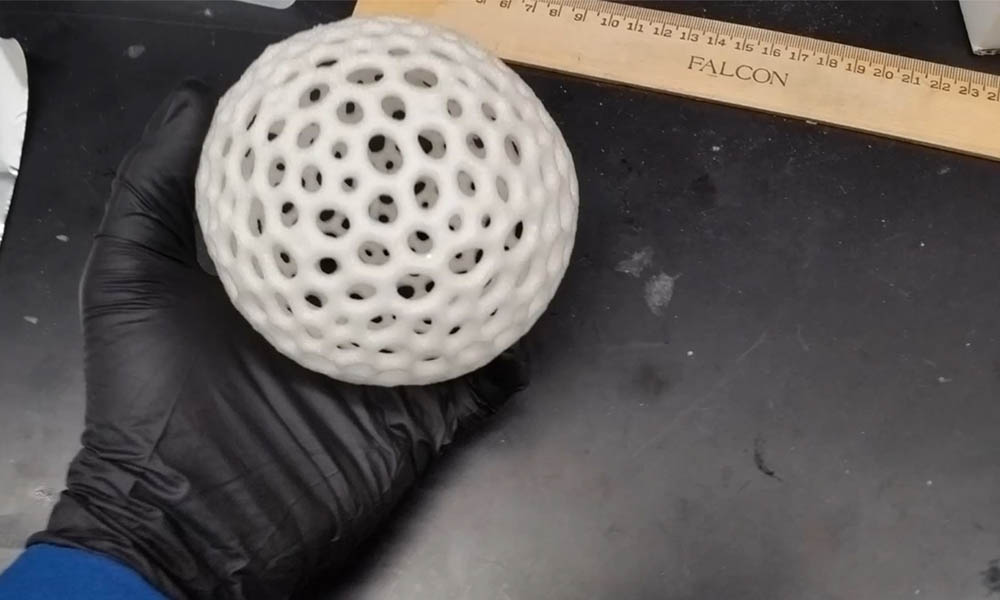UC San Diego makes 3D Printed expandable objects possible
Posted By Jérôme Deschamps on May 27, 2020 | 0 comments
With a capacity to achieve complex geometries and freed from the constraints of molds, the strengths of Additive Manufacturing are numerous. Size, on the other hand, isn’t typically one of them. With a few exceptions, 3D Printers all come with maximum build areas, which in turn translate to a few constraints one has to deal with when 3D Printing oversized models.
Fortunately, ways to make up for such space restrictions do exist, and you can count on inventive Additive Manufacturing minds to find them. Last month, a UC San Diego research team has developed a 3D printing foam that can expand up to 40 times its original size.
Credit: Expandable Foam Supersizes 3D-Printed Objects – Headline Science, American Chemical Society, YouTube
How 3D Printing expandable foam is made possible?
Jonathan Pokorski, David Wirth, and their research team wanted to develop an expandable material that any users could have access to, even with cheap, commercial 3D printers. To come up with such kind of material, the UC San Diego research team decided to focus on SLA technologies. Stereolithography is a process of 3D Printing objects using patterns of light along with UV-curable resin polymers.
The first stage of development aimed at selecting a monomer, a material the team could use as a basis for their resin formulation. After carrying out different tests, the researchers found out that 2-hydroxyethyl methacrylate (otherwise referred to as HEMA) would present the fast curing time they needed.
To turn HEMA into a usable foam, the team had to add two materials to it: Photoinitiators, which are required to allow resins to be cured, and a blowing agent that would allow the material to expand. Step 2 was hence to find the right concentration of these 3 components to get the final mixture completed.
Once the right balance was achieved, the research team 3D printed a lattice sphere. To allow it to expand, they heated it at a 200 °C temperature over a 10 mins time period. The heat decomposed the blowing agent which made the sphere 40 times bigger than before the process.
Why 3D Print objects with expandable foam?
Watching foam expand on footage sure looks very satisfying, now, one may wonder what 3D printing expandable materials would exactly allow for. Obviously, such research wouldn’t have been achieved without clear applications, which, according to the UC San Diego team, are many.
Lightweight applications are the first area such material could be involved in, as it could help design more efficient, lighter buoyancy systems. To highlight this potential, the researchers 3D printed a tiny boat and tested the load it could handle before and after the heating process. The 3D print was only able to bear a 10g cargo with its original size but could handle 25 times more weight once the foam expanded.
According to the research team, this material could also be used to build airfoils or expandable astronaut habitats.
If you wish to get updated with more out of the ordinary 3D Printing news, feel free to sign up to our Newsletter.
Credit for main image: SolidSmack


 Connect with Google
Connect with Google Connect with Facebook
Connect with Facebook